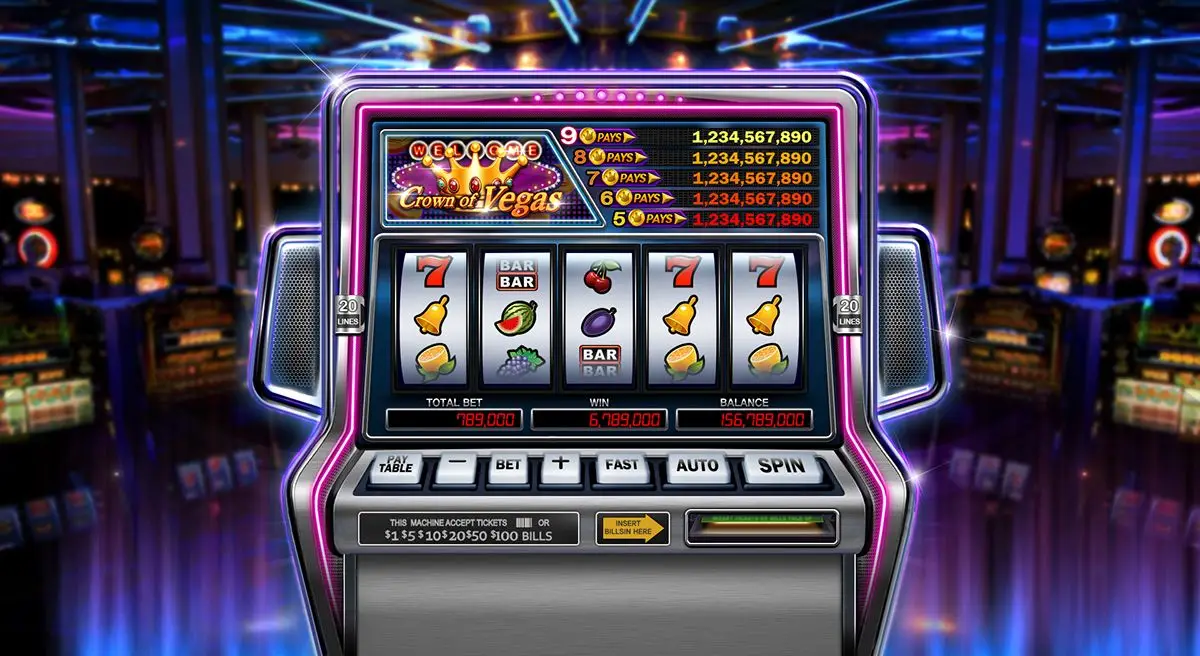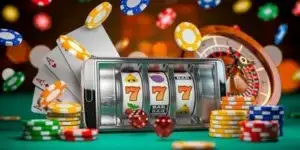Slot machines have long been an integral part of the gambling industry, and their popularity is only growing every year. Today, developers continue to delight players with innovative mechanics, visual effects and tempting bonuses. Technological innovations, the introduction of artificial intelligence and elements of virtual reality have made games not only exciting, but also more profitable. In this article, we will present the TOP-7 slot machines for real money that offer a unique experience and generous opportunities to win in 2025.
How is the list of top slot machines for real money compiled in 2025?
When compiling the rating, key parameters are taken into account that determine the success and popularity of the machines:
- RTP (Return to Player) – the percentage of bets returned to players. The higher the indicator, the greater the chances of successful winnings.
- Volatility – the level of risk in the game: high volatility means rare but large wins, low – frequent but small payments.
- Mechanics and bonuses — the presence of unique features such as multipliers, free spins, progressive jackpots.
Graphics and sound — visual design and high-quality soundtrack that create an atmosphere. - Compatibility with mobile devices — the ability to play on smartphones and tablets.
- Popularity among players — reviews, the number of games on the platform and the expert community’s assessment.
1. Starburst XXXtreme (NetEnt)
When it comes to cult slots, it is impossible to ignore this slot. In 2025, the updated version, Starburst XXXtreme, ranks among the top slot machines for real money. The machine offers familiar mechanics, supplemented by the XXXtreme Spins function, which increases the chances of getting multipliers up to x50. Bright space design and minimalistic interface make the gameplay intuitive. The RTP of the game is 96.26%, which is slightly above average, and the high level of volatility provides big wins, although it requires patience.
2. Book of Dead: Legacy (Play’n GO)
The Book of Dead slot has long been a classic, but in 2025, the developers of Play’n GO released an extended configuration – Legacy. The game retained its recognizable elements, such as the ancient Egyptian theme and the free spins mode with expanding symbols. The main feature of Book of Dead: Legacy was the increased maximum win – up to x15,000 of the bet. The RTP of the slot is 96.21%, and bonus rounds with high potential for large payouts make it one of the leaders of the top real money slot machines in 2025. The machine is ideal for lovers of classic solutions.
3. Gonzo’s Quest Megaways (Red Tiger)
Another legend that has experienced a renaissance. Gonzo’s Quest Megaways is an evolution of the original NetEnt slot, reworked by Red Tiger. The machine uses innovative mechanics that allow you to create up to 117,649 winning combinations on each spin. The exciting storyline associated with the adventures of the conquistador Gonzo is complemented by a unique Earthquake function that removes symbols with low payouts, increasing the likelihood of a big win. RTP is 96%, and multipliers in the avalanche mode (Avalanche Multipliers) can reach x15, which makes the real money slot machine a real hit of the top 2025.
4. Big Bass Bonanza: Splash Edition (Pragmatic Play)
 The fishing theme of Big Bass Bonanza has been continued in the new version – Splash Edition. The format has become a favorite of players due to generous bonuses, simple gameplay and impressive opportunities to win. The main innovation is the Splash Spins function, which is activated randomly and adds additional multipliers to the win. RTP is 96.71%, which makes the game one of the most profitable.
The fishing theme of Big Bass Bonanza has been continued in the new version – Splash Edition. The format has become a favorite of players due to generous bonuses, simple gameplay and impressive opportunities to win. The main innovation is the Splash Spins function, which is activated randomly and adds additional multipliers to the win. RTP is 96.71%, which makes the game one of the most profitable.
5. Mega Moolah: Moonlight (Microgaming)
When it comes to progressive jackpots, Mega Moolah always takes the lead. In 2025, Microgaming developers released a new version – Moonlight, which took players to the mysterious world of the night savannah. The “millionaire slot” has already made many participants rich. Characteristics:
- Four jackpot levels.
- African theme with bright graphics.
- RTP: 88.12% (the low rate is compensated by the chance of a huge win).
6. Dead or Alive 3 (NetEnt)
Dead or Alive 3 has become a worthy continuation of the popular series. Wild West aesthetics, impressive sound and incredibly complex bonus rounds make the slot machine one of the most anticipated new products of 2025 in the top list. The game offers an RTP of 96.8% and high volatility. Thanks to the High Noon Bonus feature, users can increase their winnings tenfold, which makes it especially popular among experienced participants.
7. Mystic Scrolls: Ancient Secrets (Quickspin)
Mystic Scrolls is an innovative project that combines elements of a slot and role-playing games (RPG). Players explore the magical world, discover spells and collect artifacts. The main feature of Mystic Scrolls is a progressive level system: the longer you play, the more opportunities open up. RTP is 96.5%, and unique mechanics make the session truly exciting.
How to choose a slot machine to play for real money in 2025 from the TOP-7?
Choosing the right slot is the key to enjoying the process and a chance for big payouts. Before you start playing, pay attention to the following indicators:
- RTP and volatility. High parameters and low volatility are suitable for beginners, while experienced participants are more interested in options with high volatility and big payouts.
- Availability of bonuses. Pay attention to the presence of free spins, multipliers and bonus rounds.
- Developer popularity. Choose games from well-known studios such as NetEnt, Microgaming or Play’n GO.
Conclusion
 The TOP 7 slot machines for real money in 2025 prove that the gambling industry continues to evolve, offering players more and more opportunities for entertainment and winnings. From slots with a high RTP to progressive jackpots and innovative mechanics, everyone will find something to their liking. It is important to remember that success depends not only on the choice of machine, but also on competent bankroll management and a responsible approach to the process.
The TOP 7 slot machines for real money in 2025 prove that the gambling industry continues to evolve, offering players more and more opportunities for entertainment and winnings. From slots with a high RTP to progressive jackpots and innovative mechanics, everyone will find something to their liking. It is important to remember that success depends not only on the choice of machine, but also on competent bankroll management and a responsible approach to the process.










 Choosing is a process in which you should take into account many factors in order to really enjoy it. First, it is important to understand that there are both classic and innovative solutions on the market, each of which offers something of its own.
Choosing is a process in which you should take into account many factors in order to really enjoy it. First, it is important to understand that there are both classic and innovative solutions on the market, each of which offers something of its own. Choosing demo casino slots is the key to getting the most out of the game without unnecessary risks. Immersing yourself in virtual excitement using time-tested slot machines allows you to study the mechanics without exposing yourself to financial losses. Follow our recommendations, choose licensed platforms, and may luck always be on your side.
Choosing demo casino slots is the key to getting the most out of the game without unnecessary risks. Immersing yourself in virtual excitement using time-tested slot machines allows you to study the mechanics without exposing yourself to financial losses. Follow our recommendations, choose licensed platforms, and may luck always be on your side.